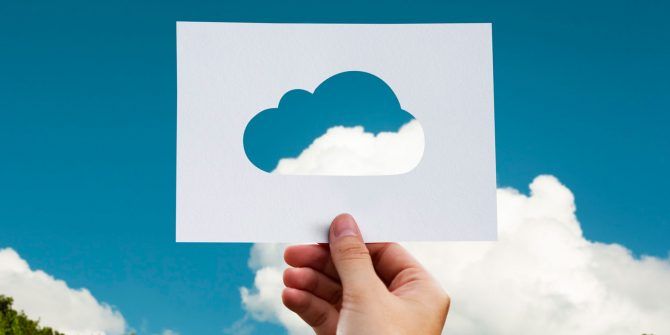Even if you’re someone who prefers using offline storage, cloud storage is indispensable. But every time you use commercial cloud storage, whether it’s free or paid, you’re trusting a faceless company with the security and privacy of your files.
One way you can get around the lack of control is to host your own storage. But how do you self-host cloud storage, and are there straightforward solutions online?
What Does it Mean to Self-Host Cloud Storage?
First, you need to understand how cloud services work. Whether it’s a cloud computing service like SaaS or PaaS, or cloud storage, they work the same way. The company providing the service has a bunch of servers that they maintain in-house and offer remote access to the servers for a recurring fee.
Self-hosting your cloud means owning the servers you use. You can do this in one of two ways. For complete control, you can buy a server and manage it yourself. That would mean covering the initial investment alongside electricity and maintenance costs.
Your other option is to rent a server—or a portion of a server—that you can then use for whatever you want without having to care for it digitally or physically. Instead, your rent pays for the company to maintain it for you.
You need to figure out the software you’re going to use to run and self-manage your server with either option. However, there are countless companies and open-source projects offering solutions.
But when the question is OwnCloud vs. NextCloud vs. Seafile, which one should you choose?
OwnCloud is open-source software that simplifies the process of creating and using file hosting services and was released in 2010. It works well for users looking to self-host their own cloud storage. It also works for enterprises and entrepreneurs aiming to launch a cloud service for widespread use as it doesn’t require a lot of technical knowledge.
Supported Devices
You can install OwnCloud’s server software for free, but only on Linux devices. When it comes to the client software, you can install it directly on Windows, macOS, and Linux devices in addition to mobile apps for Android and iOS.
Pricing
OwnCloud offers paid services for working with more than one user and whether they provide the servers. But you can use OwnCloud completely free of charge if you’re self-hosting your servers.
With the free version, you can share and sync files between devices along with storage capacity that’s only limited to the size of your server.
Security Features
Fortunately, the majority of security features that OwnCloud offers are included with the free, self-hosted option. They offer end-to-end encryption, two-factor authentication, antivirus, firewall, and even file integrity checking.
But you should note that the free version doesn’t come with ransomware protection.
User Experience
Even the most experienced users may need a tutorial or two in the setup process. OwnCloud’s apps and desktop software are generally easy to use if you’re willing to dedicate a couple of hours to explore all the available features and customization options.
When it comes to support, free users get access to the community forum. There, you can ask and answer questions with other users. You also have complete access to OwnCloud’s documentation and official tutorials. However, you don’t have access to live customer support.
NextCloud is an open-source app used for creating and self-hosting services. You may find a lot of foundational similarities between NextCloud and OwnCloud because NextCloud is a fork of OwnCloud that separated in 2016. Former OwnCloud developers followed the fork, too, and helped to develop the new project.
The two biggest differences concern the user interface and enterprise licensing agreements.
Supported Devices
Like its source software, the server app can only be installed on Linux devices, while the client software is available to install on Windows, macOS, and Linux devices. Mobile apps are also available on the App Store, Google Play store, and Windows Store.
Pricing
Since NextCloud is open source, you can use the software completely free, as long as you host your own server.
You can sync your data and access it through any of the supported mobile and desktop apps, in addition to web apps using your browser of choice. Not to mention, you can use NextCloud in tandem with commercial cloud storage services like Dropbox.
Security Features
NextCloud offers all users enterprise-class security. Your storage is encrypted with end-to-end encryption, and you can control file and app access.
Additionally, NextCloud is constantly upgrading its app’s security. There are hefty bounties for people who manage to find bugs in their open-source software.
User Experience
In contrast to its predecessor, NextCloud offers a user-friendly interface on its free apps. If you’re not a technical user and tend to get lost in long drop menus and endless options, NextCloud may be the right option for you.
The NextCloud interface is intuitive and allows users to accomplish tasks and learn new skills with little effort.
Seafile is an open-source and cross-platform software that allows users to automate file-hosting. It’s a file syncing and sharing solution that first released in late 2012. The features are the most similar to its commercial counterparts like Google Drive, Dropbox, and Office 365.
Supported Devices
Seafile allows you to install both the desktop and server client on Windows, macOS, and Linux devices. Mobile apps are available for Android and iOS, while servers are available for Linux and Raspberry Pi devices.
Pricing
Whether you plan on deploying it on your own server or use Seafile’s servers for up to three users, you can use it free of charge. With the free version, you can share files with other users and sync data across multiple devices.
Security Features
While not automatic, you can encrypt at-rest data using AES 256-CBC encryption. The free version also allows for control of files and app access rights in addition to two-factor authentication.
User Experience
Seafile’s interface lands in the middle between highly technical and intuitive. As long as you’re not looking for highly specific settings, you can use it even if you’re not tech-savvy.
If you face issues while setting up or using, you can always refer to Seafile’s user manual and documentation. Not to mention, the free version includes email support.
OwnCloud vs. NextCloud vs. Seafile: What’s the Best Self-Hosted Cloud Storage?
There is rarely a definitive winner when it comes to highly personal projects, especially if they all cover the basics. Still, make sure your self-hosting software of choice is compatible with your level of expertise and provides features you may want to use in the feature, paid or not.
About The Author

